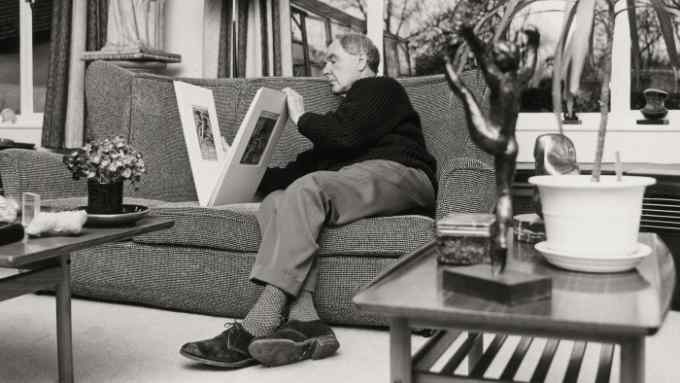House museums #63: Max Liebermann

Simply sign up to the House & Home myFT Digest -- delivered directly to your inbox.
Between 1910 and 1934, the German Impressionist painter Max Liebermann depicted the garden of his lakeside summer home in Wannsee, an affluent suburb of Berlin, in more than 200 oil paintings and works on paper. Alive and radiant, the images capture his mastery of light and colour.
“Everything is set out in straight lines, everything is divided into certain areas and every area serves a purpose,” says Dr Lucy Wasensteiner, director of the Liebermann Villa, of the garden. As we walk past the well-ordered flower beds and vegetable patches, she explains that Liebermann’s meticulous design was influenced by his friend Alfred Lichtwark, director of the Hamburg Kunsthalle art museum and a follower of the reform garden movement, which emphasised man-made qualities in horticulture.
As co-founder of the Berlin Secession, which broke away from traditional academy painting in the 1890s, Liebermann played a large role in introducing modern movements to Germany and himself owned works by Manet, Cézanne, Monet and Degas. “Liebermann was a great collector of French Impressionism,” says Wasensteiner. “We think he actually moved the pictures backwards and forwards between here and his house in Pariser Platz.”


Pariser Platz, in central Berlin, is where the artist, his wife Martha and their daughter Käthe had lived since 1892. Each summer he would travel to Holland to paint. That would change after he purchased two adjacent plots of land in Wannsee in 1901, and over the next decade constructed a house between the front and back gardens.
Liebermann was as fastidious about its design as the garden’s. In a letter to Lichtwark he laid out his vision: “I spent the whole day building yesterday and we’re pretty much clear on the floor plan . . . Not so about the facade, which looks too much like a farmhouse: I want a country house built by a city dweller.”
The end result would be an elegant villa in the Hamburg classicist style, his “castle by the lake”. At the outbreak of the first world war, the villa became central to the artist’s oeuvre. “As a German he was no longer able to travel and so Wannsee is where he painted in summer. From 1914 onwards we see hundreds of paintings, sketches, pastels, drawings of this garden from every possible angle,” says Wasensteiner.

When Liebermann died in 1935, aged 87, he was old enough to have seen the rise of Nazism. As a Jew he was no longer permitted to exhibit his works and was pressured into resigning as president of the Prussian Academy of Arts. His daughter managed to emigrate to the US in 1938, but Martha stayed behind and witnessed the forced sale of her properties. She died by suicide in 1943 in order to avoid deportation to a concentration camp.
After the war the garden was flattened and the villa converted to a hospital, then a watersports club, before being restored by the members of the Max Liebermann Society between 2002 and 2006.
Although none of the original contents of the house remain, the museum’s exhibition space displays several of Liebermann’s works from its collection and long-term loans. In a 1921 landscape of the vast lakeside lawn, the smock of his young granddaughter stands out as a daub of white against a sea of green awash with the scarlet of the geraniums planted there each summer. The scene transmits abundance, warmth, an inviting sense of home. It is manicured nature, yet living and breathing, like Liebermann’s garden.
Find out about our latest stories first — follow @FTProperty on X or @ft_houseandhome on Instagram

Comments